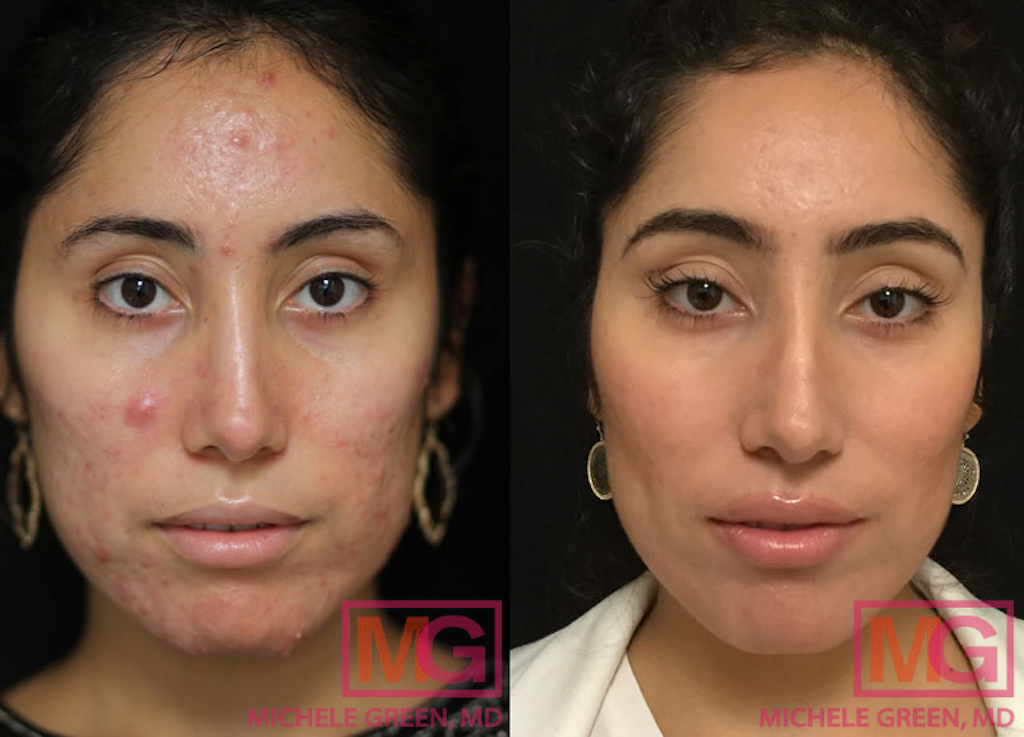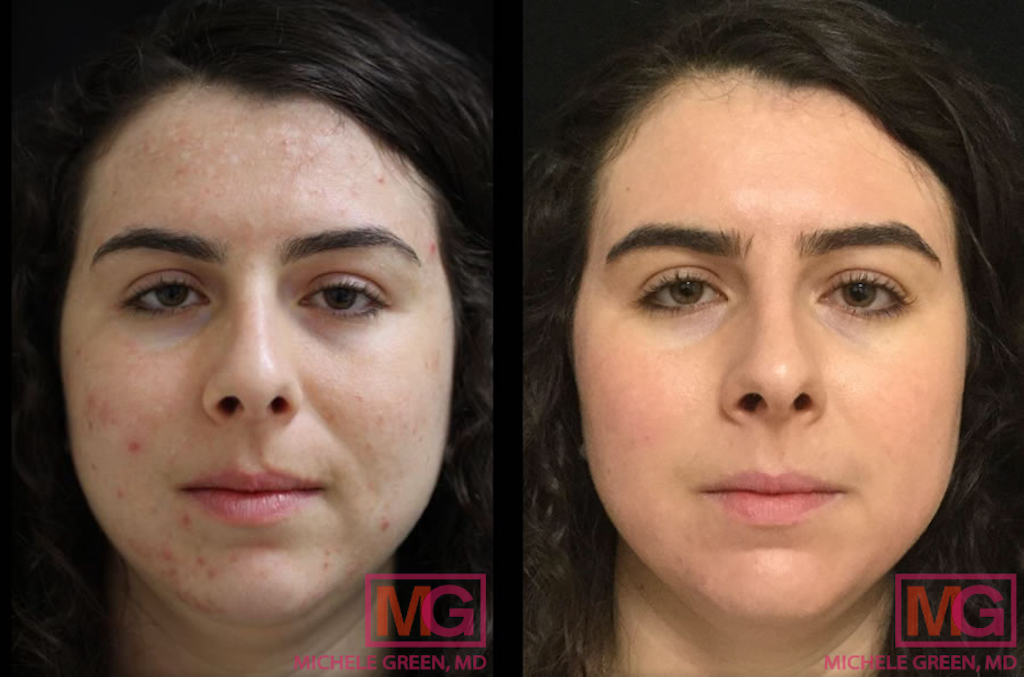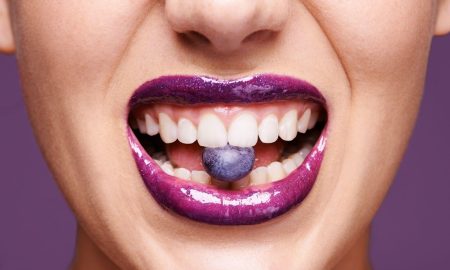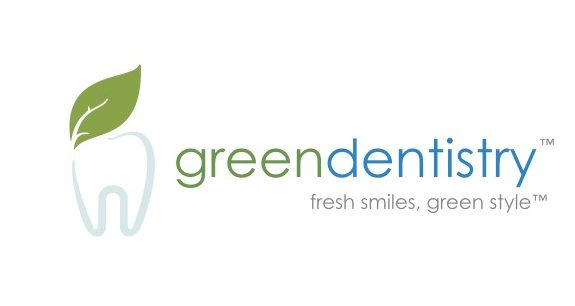Dr. Michele S. Green M.D., FAAD., is a Board-Certified Cosmetic Dermatologist, Fellow of the American Academy of Dermatology, and has been an international leader in cosmetic dermatology for over 25 years. Upper East Side patients and those from the surrounding areas of New York City flock to her practice for a variety of cosmetic dermatology treatments. A graduate from Yale University, with an MD from Mount Sinai Medical School in NYC, Dr. Green treats some of the most discerning, demanding women and men in the world, with issues ranging from premature skin aging to hyperpigmentation, rosacea, acne, skin laxity and sun damage. Haute Beauty Expert Dr. Michele Green discusses how hormonal acne occurs and recommends treatments and procedures to control it.
 Photo Credit: Courtesy of Dr. Michele GreenWhy does hormonal acne occur?
Photo Credit: Courtesy of Dr. Michele GreenWhy does hormonal acne occur?
Hormonal acne is just like it sounds: acne that is incited by hormonal shifts. Hormonal acne is typically associated with the experience of puberty in one’s teen years, but hormonal acne breakouts can develop at any age. Hormonal acne occurs in adults who are dealing with clogged hair follicles, excess oil production, unwanted bacteria, and fluctuating hormonal changes. Hormonal acne is more commonly experienced by women than by men due to a number of factors, including menstrual cycles, pregnancy, menopause, increased androgen levels, or polycystic ovary syndrome (PCOS).
During menopause, many women experience hormonal acne due to a shift in hormone levels. Menopause is typically marked by a decrease in estrogen and an increase in androgen hormones like testosterone, which can lead to more blemishes. Additionally, hormone replacement therapies to ease menopause symptoms often use progestin to replace lost estrogen and progesterone levels in the body, which can lead to additional acne flare-ups.
What are some characteristics of hormonal acne?
If you are experiencing acne breakouts and you are no longer in your teen years, you may be experiencing hormonal adult acne. Additionally, if you experience fluctuations in acne breakouts in a cyclical pattern, you may well be dealing with hormonal acne. Oftentimes, patients with hormonal acne will experience breakouts more intensely once a month. An increase in stress can also have a huge impact on hormonal acne breakouts. Hormonal acne blemishes appear most commonly in the t-zone during puberty but typically appear along the jawline and lower face in cases of adult hormonal acne.
How can you tell apart hormonal acne from regular pimples?
Hormonal acne tends to develop differently from ordinary zits. Although hormonal acne can appear as a blackhead, which is caused by clogged hair follicles, or as a whitehead that’s caused by dead skin cells and excess sebum production (oil), hormonal acne often appears as a painful cyst. Cystic acne is a variety of severe acne that form deep under the skin’s surface, and cannot be extracted by ordinary means. Cysts caused by hormonal shifts also can reappear in the same location over and over.
Will hormonal acne stop?
A pimple caused by a hormonal acne flare-up will usually last about a week before it resolves, but for some, hormonal acne can lead to frequent breakouts on the skin. Hormonal acne is typically cyclical, though it can be exacerbated by certain life events such as pregnancy and menopause. Sometimes, hormonal acne will fade on its own, but for many, prescribed treatment of acne is essential to restore clear skin. In these cases, hormonal acne may require treatment with oral contraceptives or Spironolactone, to decrease the amount of testosterone, which can cause this type of acne breakouts.
What are some helpful skincare treatments for hormonal acne?
A tailored skincare routine can make a vast difference when it comes to the treatment of hormonal acne. In particular, cleansers and targeted face washes can help to prevent hormonal acne from forming on the surface of the skin. Here are some key ingredients in skincare products that can help treat hormonal acne with consistent use: salicylic acid face wash, glycolic acid face wash, benzoyl peroxide cleanser, probiotic cleanser, retinol cream, MGSKINLAB’s at-home Acne Treatment, and MGSKINLAB’s Ultimately Sheer Hydrating Lotion.
 Photo Credit: Courtesy of Dr. Michele GreenWhat alternative procedures do you recommend to treat hormonal acne?
Photo Credit: Courtesy of Dr. Michele GreenWhat alternative procedures do you recommend to treat hormonal acne?
Acne-fighting cosmetic treatments, including laser treatments, facials, and chemical peels work best. One of the most popular acne-fighting treatments in our office is a HydraFacial™. The HydraFacial™ uses a three-step process of cleansing, exfoliating, and infusion of intensive serums in order to fully clear out clogged pores while simultaneously reducing redness and preventing further outbreaks. An acne-fighting chemical peel uses glycolic or trichloroacetic acids to deeply exfoliate the skin. This removes dead skin cells from the surface of the skin and helps to reveal a healthy layer of skin. Microneedling with Platelet-Rich Plasma (PRP) can help to revitalize skin and reduce the likelihood that further acne breakouts will occur.
If you’re frustrated by the appearance of hormonal acne, there are solutions that can help. Dr. Green has been at the forefront of cosmetic dermatology and skin care for over two decades and strives to help her patients look and feel like the best version of themselves. Contact the office today to create your own custom hormonal acne treatment plan with Dr. Green.
Dr. Michele Green is a board-certified dermatologist based in New York City, voted Best Doctor New York Magazine, and Top Doctor in the NY Times and Castle Connolly. She is an international expert in cosmetic treatments including the treatment of hormonal acne. Find out more and contact us online or at 212 535 3088 to arrange a consultation.
For more information, visit Dr. Michele S. Green's social media:
























